#snakestones
Explore tagged Tumblr posts
Text
i cannot stop thinking about this

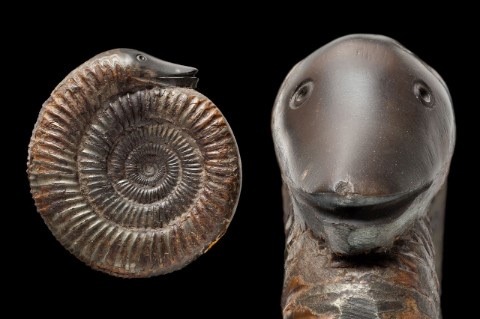
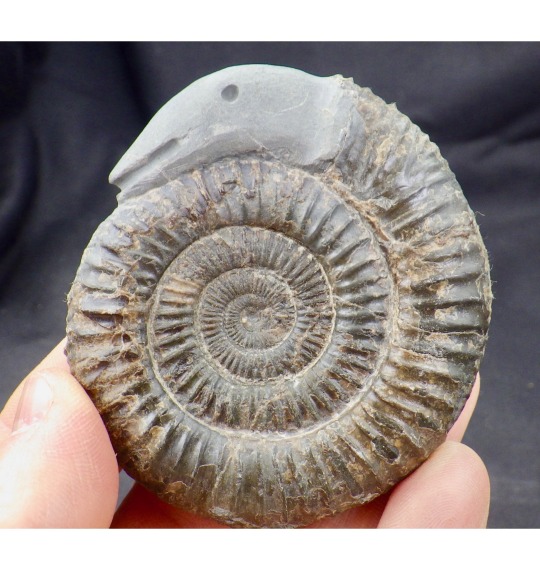

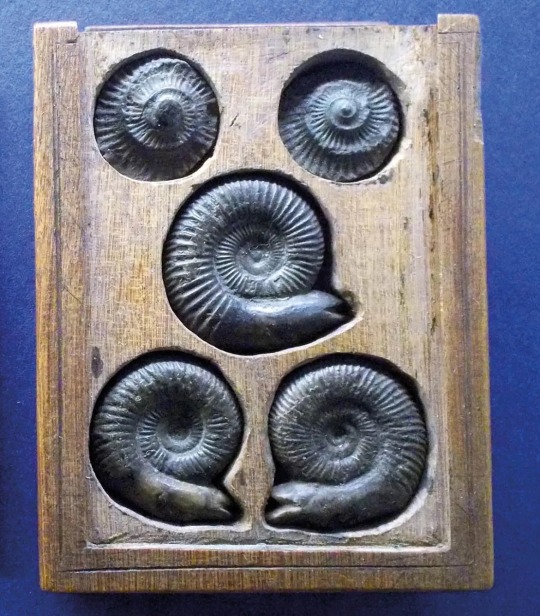
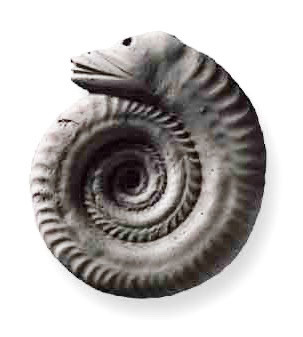
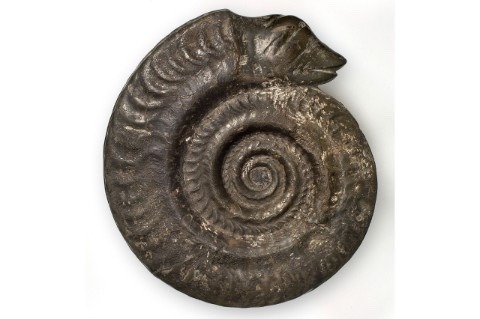
6 notes
·
View notes
Photo

Giant Chalk Ammonite Fossil - Cretaceous, Eastbourne, Sussex - Authentic with COA
Giant Chalk Ammonite Fossil from the Cretaceous Period
Add an extraordinary piece of prehistoric history to your collection with this Giant Chalk Ammonite Fossil. This rare and authentic specimen originates from the chalk deposits of the Cretaceous period and was discovered in Eastbourne, Sussex, UK. This fossil provides a fascinating glimpse into the ancient marine life of the chalk seas.
Key Features:
Specimen: Giant Chalk Ammonite Fossil
Geological Formation: Chalk
Period: Cretaceous
Location: Eastbourne, Sussex, UK
Certification: Includes a Certificate of Authenticity
Provenance: Ex-private collection
Scale: Scale cube in photo = 1cm
Full Sizing: Refer to photos for exact dimensions
Description:
This Giant Chalk Ammonite Fossil has been meticulously selected to ensure it meets the highest standards of quality and authenticity. The attached photo shows the exact specimen you will receive, highlighting its distinct features and well-preserved condition. This fossil is not only a stunning display piece but also a tangible link to our planet's ancient marine environment.
Authenticity:
We guarantee that all our fossils are 100% genuine specimens. Each fossil comes with a Certificate of Authenticity to provide assurance of its provenance and historical significance.
Shipping and Handling:
Your fossil will be carefully packaged to ensure it arrives safely. We offer fast and reliable shipping options to deliver your specimen as quickly as possible.
Why Buy From Us?
Extensive selection of genuine fossils
Each purchase includes a Certificate of Authenticity
Exceptional customer service and support
Fast and secure shipping
Don't miss the opportunity to own this Giant Chalk Ammonite Fossil from the Cretaceous period. Perfect for collectors, educators, and enthusiasts alike, this specimen is a valuable addition to any collection.
Note:
Please refer to the photos for a detailed view of the fossil's size and condition. The scale cube in the images measures 1cm for reference.
Add this extraordinary piece of marine prehistory to your collection today and own a genuine piece of Earth's ancient past!
#ammonite#ammonites#fossils#fossil#fossil ammonite#snakestone#snake stone#prehistoric#Dactylioceras#commune#marine animal#sea fossil
0 notes
Text
Number 6 is a Snakestone!!
Ammonites are common in Whitby, England. When it became a tourist hub in the 1800s, locals took advantage of the local myth of how the ammonites were snakes with their heads chopped off and carved snake heads into the ammonites to sell.
I got one when I visited Whitby from fossils-uk.com.
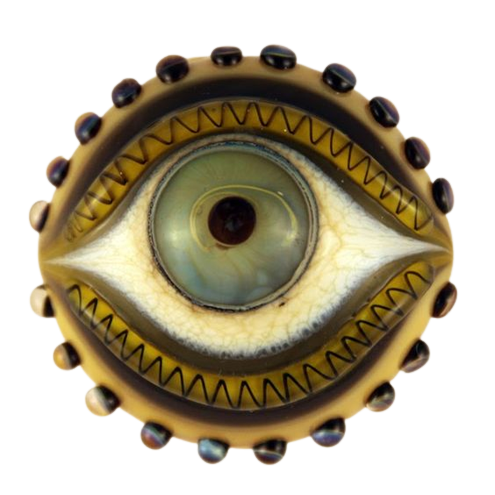
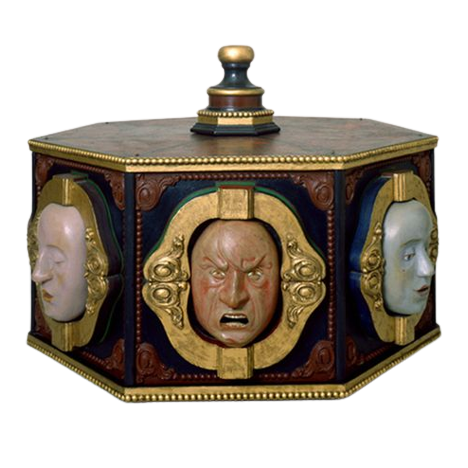
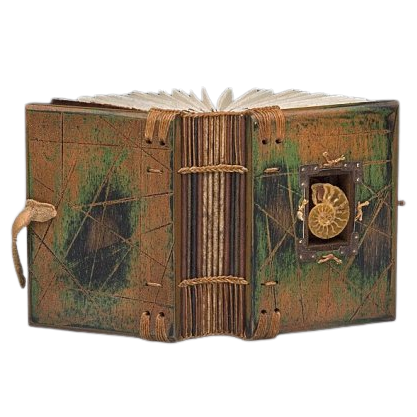
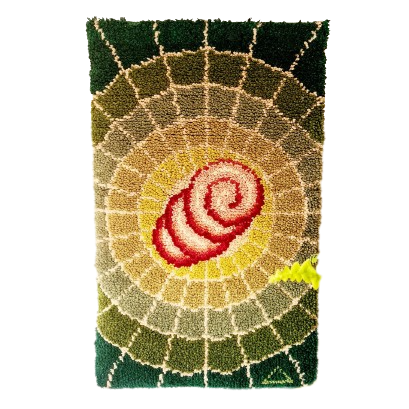
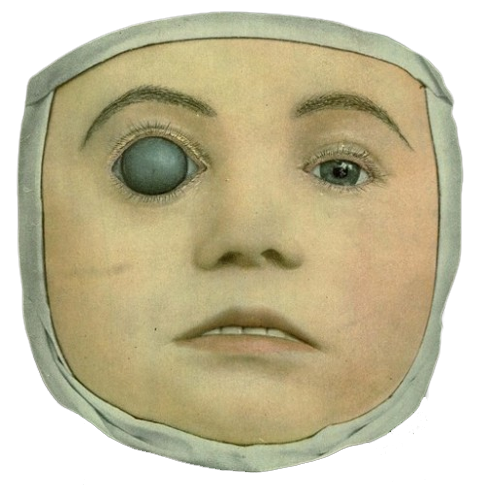
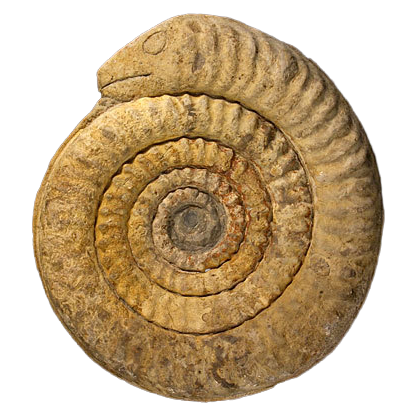
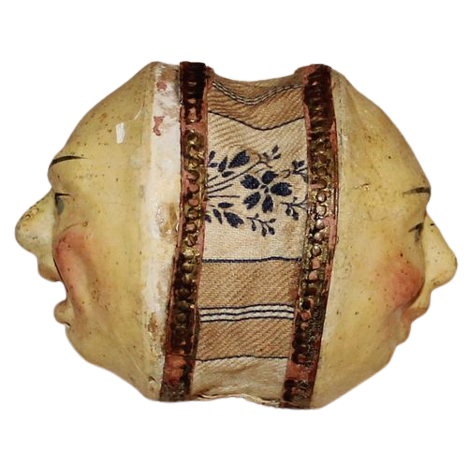
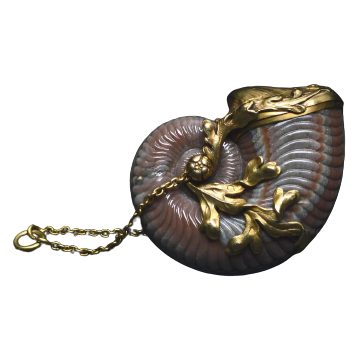
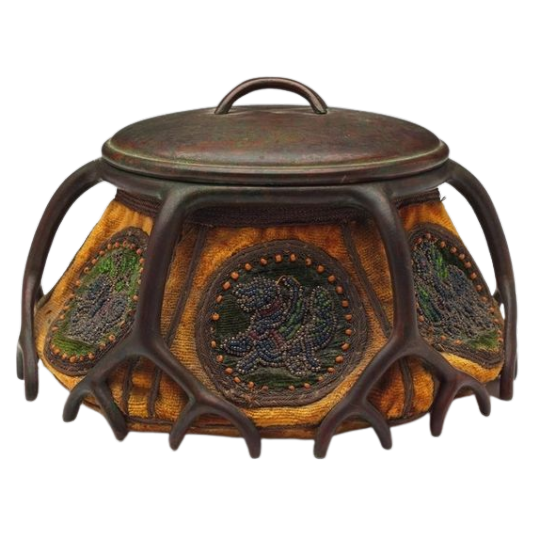
Random PNGs, part 165.
(1. Eye button by Jari Sheese, 2. Assemblage by Ellen Rixford, 3. Book by Daniel Essig, 4. 70s tufted rug, 5. Cornea globosa medical model, 6. Snake carved ammonite (?), 7. 1800s two-sided squeak toy, 8. Perfume bottle from 1900-1910, 9. 1800s pot or inkwell (?))
2K notes
·
View notes
Text
Well anyway...I finished Once Bitten Twice Dead.
...Can I be real with you all?
I kinda really liked it.
More under the cut, maybe some spoilers:
Yeah, just from an objective standpoint, the book is decent. Definitely very YA, but the writing is good, the story is interesting, and the characters were written very well. It did really feel like I was watching a genuine MH movie in my head at certain points. And while I don't love certain choices made, I was kinda impressed with some of the plot points the author came up with. Very bold of her to kill of Dracula in such a way.
The beginning was probably the weakest part, mainly because it throws so much at you at once, and it's a lot to take in, but it all comes together pretty nicely in the end. And maybe this is giving the author too much credit, but it kinda puts you in the same headspace as Draculaura who is dealing with a lot on er plate immediately.
This isn't to say I don't have some major issues with it. I'll never agree with the decision to break Draculaura and Clawd up to pair her with a mediocre normie dude, however, I think it was clever that the author drew parallels between their romance and Dracula and Draculaura's mom. I myself am also not a huge Lala fan (she's genuinely my least fave of the main ghouls) so reading a book focused pretty solely on her was gonna be a challenge for me anyway. That being said though, ghoulie went through it in this novel. She for sure pissed me off at points, but she had a lot of character growth that we never really saw in any of the movies. (Closest would be Frights Camera Action, but this book is more like if Draculaura actually did accept being Vampire Queen and taking charge) If you're a huge Drac fan, and you don't care all that much about her relationship with Clawd, then this book is for you.
You can really tell that the author was either an actual fan of Monster High, or at the very least did a lot of research. She managed to fit each main ghoul into the story in a way that felt natural and in character, which yes sometimes means being over the top (Cleo) Not to say they were featured a whole lot, after all Drac spent a majority of the book avoiding the hell out of them, but my favorite parts of the books were the ones they were in. Oh, and we got another Cleuce break-up!
The normie dude was fine. His and Drac's relationship was cute enough, but his name pissed me off. Poe. Dumb ass name. It was only ever used to compare how much he isn't like Edgar Allen Poe, like whatever man. And spoiler, but they ultimately don't end up together by the end.
Tbh the synopsis of this book does it a disservice. So serious that it's hard to take it seriously. Was it technically accurate? Yeah, but the story never got super dark imo. Darkest thing to happen was probably Dracula's death.
And honestly??? The snakestone thing was hilarious! I genuinely laughed out loud. The entire ending scene was so fun tbh. Deuce was also pretty good in this.
Anyway, if you have the means, I recommend giving the book a chance if you're interested. It's really not as bad as we all thought it would be. I promise its infinitely better than the Ghoulfriends books, and easily comparable to the Lisi Harrison novels (well the first 2...the last 2 are garbage.) And lets be real, as much as I love them, those books haven't aged the best, so there's definitely an argument that OBTD is better. All comes down to personal taste.
#monster high#monster high gen 1#monster high books#once bitten twice dead#i have more issues but i mostly wanted to focus on how not bad the book is#i was so pleasantly surprised#this is another story that claims that draculaura was turned at 16 which bungles her aging#one major gripe of mine is that it felt really ooc for her to just not have any feelings about her breakup with clawd#there was just one throwaway line about it and that was it nothing about the aftermath or even how she felt#i know damn well her ass would have been devastated even if she initiated it she has big feelings#i also want to say please dont feel pressured into reading it if it genuinely doesn't seem like your thing#im very used to books with similar vibes to this but i know their not everyones cup of tea#hell even i try to avoid YA if i can nowadays#but i was expecting this to be actual dog shit plus i only paid $5 for it so imagine my surprise when i liked it#now i just gotta get my hands on the original gen 1 comics and the new scaremester ones#text post
21 notes
·
View notes
Text
The mental image I have of Cleo excitedly saying some shit like "AND THEN HE TOOK HIS SNAKESTONE- " while all the ghouls slump around the creepateria table in various states of despair is VIVID
47 notes
·
View notes
Text

Snakestone is a naturally-occurring rock in the Yondering Lands that is imbued with serpentine magic. When worn as jewellery, it grants the wearer the ability to wriggle like a snake, dramatically increasing their evasiveness.
21 notes
·
View notes
Text
I just finished reading Once Bitten, Twice Dead. It wasn't as bad as I thought it would be, but I also wouldn't call it high art or anything. Kind of a mixed bag. I'd recommend checking out a PDF first before actually buying a copy.
If you want my detailed thoughts about the book, continue reading.
What I liked:
Lagoona and Ghoulia being important to the plot
Poe. He was a little bland, but sweet.
Deuce being included with the main group again. He's part of the Fright Song, for crying out loud. He deserves at least this much respect.
Draculaura dealing with grief and loss in different ways as the story progresses
The environmentalist aspect of Lagoona's character being brought back
Frankie being a nervous wreck and trying to comfort everyone at once. I am the "anxious, fix-everything" friend, so I relate to her in that aspect.
Minor characters like Elissabat and the werecat twins being mentioned. After all, why create characters if you aren't going to use them?
The school being depicted as a sort of living thing. It's been that way since Friday Night Frights, possibly earlier, so it's nice to see that acknowledged and built upon.
The references to prior media, notably Freaky Fusion and 2015 Collector Draculaura's diary
What I disliked:
"Snakestone." No, Author, I do not want to know about the "obelisk" in a minor's pants.
The detailed description of Draculaura and Poe making out. I don't know what the allosexuals and non-repulsed aces in the crowd thought of it, but it was just too much for me.
Lagoona/Gil and Draculaura/Clawd being broken up without any explanation or elaboration. The latter isn't even a favorite ship of mine; I just want answers.
Gil being sent to a different school for freshwater monsters. He isn't that bad. He doesn't deserve to be exiled like that--and it means that his parents won. :(
The lack of Jackson and Holt. I feel like they should have a more prominent role in a story about monster-normie relations.
The overuse of monster puns. Don't get me wrong. I love myself some monster puns. But some of them don't even sound good, or they're inconsistent with previous terminology (e-maul vs. eek-mail).
12 notes
·
View notes
Text
Finished it. Quickie, spoiler-free review? Not as bad as I'd expected. Definitely felt more like the author's fan fiction than an official G1 story, but I'll take it over the first YA series! Even if there were parts that made me cringe. (2 words; Snakestone relic. Iykyk.) I'd give it a seven out of ten. More fun if you play 'spot the reference' rather than 'spot the errors'.
#Some of my predictions were off but that's fine#Stevie Reads#Longer review later? Maybe#Once Bitten Twice Dead#Spoilers???#Will definitely make a post with my random thoughts
14 notes
·
View notes
Text
WIP it, WIP it good...
1- Make a new post with the names of all the files in your wip folder, regardless of how non-descriptive or ridiculous.
2- Let people send you an ask with the title that most intrigues them, and then post a little snippet or tell them something about it!
3- Tag others to continue the game.
Every gun makes its own tune
no sin except my love
love is the warmest colour
Snakestone Moan
Such a Dreadful Shipwreck
Beginners Guide to Chaos Gardening
Call me
shameful company
Thank you @tales-of-whales
I am tagging in @murphysscribe @anyawen
#my wips#good omens#james bond#00q#bram stokers dracula#eros and psyche#some polyamory in there#and some smut
7 notes
·
View notes
Text
45 New & Forthcoming Indie Press Books by BIPOC Authors
Every month Book Club for Masochists: A Readers’ Advisory Podcasts chooses a genre at random and we read and discuss books from that genre. We also put together book lists for each episode/genre that feature works by BIPOC (Black, Indigenous, & People of Colour) authors. All of the lists can be found here.
Fiction
Weird Black Girls: Stories by Elwin Cotman (AK Press)
False Idols: A Reluctant King Novel by K’Wan (Akashic Books)
Sister Deborah by Scholastique Mukasonga, translated by Mark Polizzotti (Archipelago Books)
Bad Land by Corinna Chong (Arsenal Pulp Press)
These Letters End in Tears by Musih Tedji Xaviere (Catapult)
The Coin by Yasmin Zaher (Catapult)
Cecilia by K-Ming Chang (Coffee House Press)
Fog & Car by Eugene Lim (Coffee House Press)
We’re Safe When We’re Alone by Nghiem Tran (Coffee House Press)
A Woman of Pleasure by Kiyoko Murata, translated by Juliet Winters Carpenter (Counterpoint Press)
Bad Seed by Gabriel Carle, translated by Heather Houde (Feminist Press)
The Default World by Naomi Kanakia (Feminist Press)
The Singularity by Balsam Karam, translated by Saskia Vogel (Feminist Press)
I'll Give You a Reason by Annell López (Feminist Press)
Tongueless by Lau Yee-Wa, translated by Jennifer Feeley (Feminist Press)
Outcaste by Sheila James (Goose Lane Editions)
Silken Gazelles by Jokha Alharthi, translated by Marilyn Booth (House of Anansi Press)
Dad, I Miss You by Nadia Sammurtok, illustrated by Simji Park (Inhabit Media)
Secrets of the Snakestone by Pia DasGupta (Nosy Crow)
The Burrow by Melanie Cheng (Tin House)
Masquerade by Mike Fu (Tin House)
The World With Its Mouth Open: Stories by Zahid Rafiq (Tin House)
I Love You So Much It's Killing Us Both by Mariah Stovall (Soft Skull Press)
Non-Fiction
RAPilates: Body and Mind Conditioning in the Digital Age by Chuck D and Kathy Lopez (Akashic Books)
All Our Ordinary Stories: A Multigenerational Family Odyssey by Teresa Wong (Arsenal Pulp Press)
Dispersals: On Plants, Borders, and Belonging by Jessica J. Lee (Catapult)
My Pisces Heart: A Black Immigrant's Search for Home Across Four Continents by Jennifer Neal (Catapult)
Beyond the Mountains: An Immigrant's Inspiring Journey of Healing and Learning to Dance with the Universe by Deja Vu Prem (Catapult)
Out of the Sierra: A Story of Rarámuri Resistance by Victoria Blanco (Coffee House Press)
Thunder Song: Essays by Sasha LaPointe (Counterpoint Press)
Born to Walk: My Journey of Trials and Resilience by Alpha Nkuranga (Goose Lane Editions)
Jinny Yu (At Once/À La Fois) by Jinny Yu (Goose Lane Editions)
Log Off: Why Posting and Politics (Almost) Never Mix by Katherine Cross (LittlePuss Press)
Becoming Little Shell: A Landless Indian’s Journey Home by Chris La Tray (Milkweed Editions)
World of Wonders: In Praise of Fireflies, Whale Sharks, and Other Astonishments by Aimee Nezhukumatathil (Milkweed Editions)
Opacities: On Writing and the Writing Life by Sofia Samatar (Soft Skull Press)
The Story Game by Shze-Hui Tjoa (Tin House)
Black Meme: The History of the Images That Make Us by Legacy Russell (Verso Books)
Poetry
i heard a crow before i was born by Jules Delorme (Goose Lane Editions)
We the Gathered Heat: Asian American and Pacific Islander Poetry, Performance, and Spoken Word edited by Franny Choi, Bao Phi, Noʻu Revilla, and Terisa Siagatonu (Haymarket Books)
A Map of My Want by Faylita Hicks (Haymarket Books)
[...] by Fady Joudah (Milkweed Editions)
Comics
A Witch’s Guide to Burning by Aminder Dhaliwal (Drawn & Quarterly)
Oba Electroplating Factory by Yoshiharu Tsuge (Drawn & Quarterly)
Lost at Windy River by Jillian Dolan, Trina Rathgeber and Alina Pete (Orca Books)
9 notes
·
View notes
Text

Venture into the depths of the Sunken Playground.

Take the path of shadows.
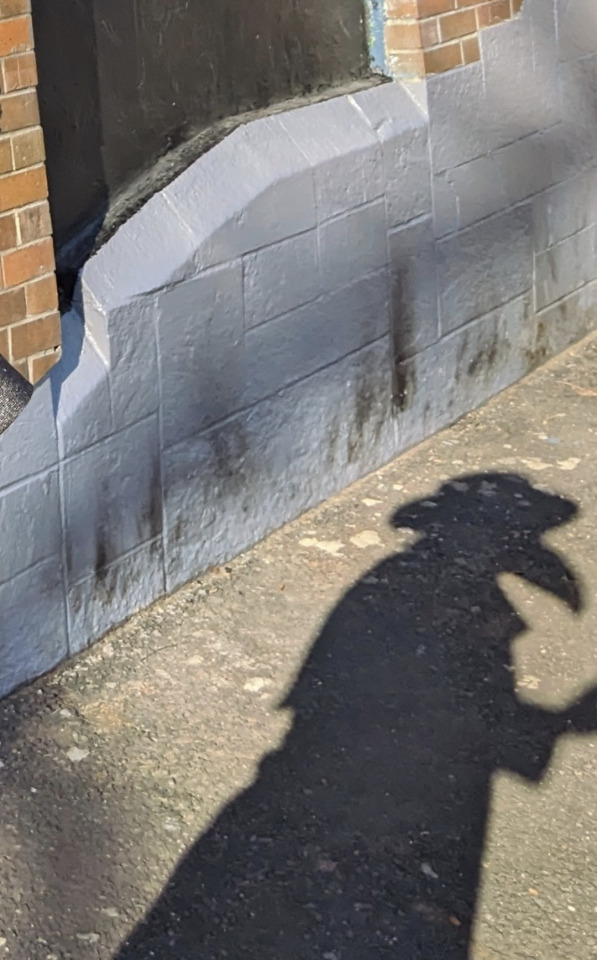
Arrive.

Be seated.
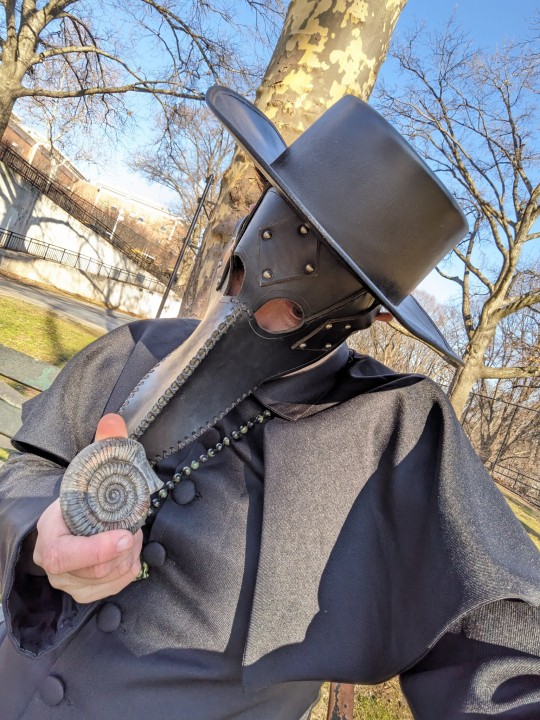
Snakestone?

Cephalopod?
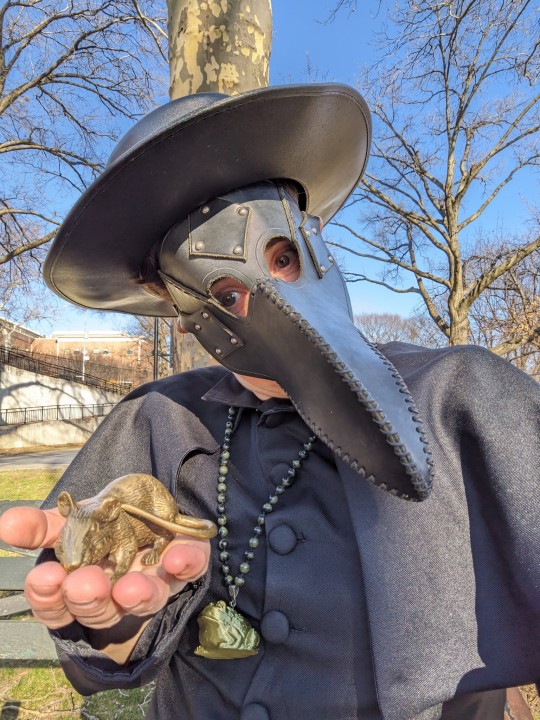
Subway Rat?
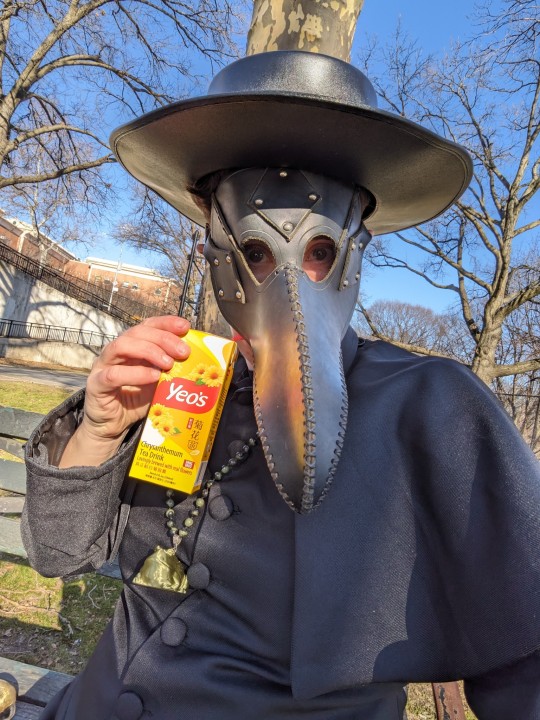
Chrysanthemum!

Delicious.
#please enjoy a box of tea in the park#with Dr Athanasius#plague doctor cosplay#plague doctor#plaguecore#plaguesona#kircher's automaton
12 notes
·
View notes
Text
THROWBACK THURSDAY: SNAKESTONES
St. Hilda's Spell
Once upon a time in 7th century England, the Saxon abbess, St. Hilda, was charged with founding a new abbey in Whitby Yorkshire.


However, upon her arrival she discovered the place was infested with snakes!
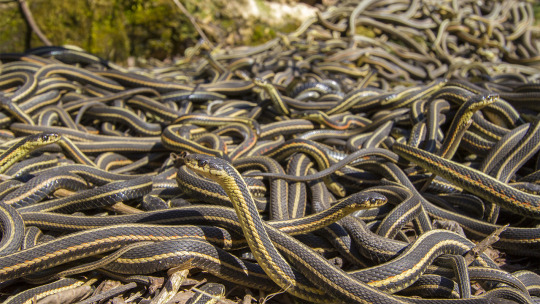
The evil serpents had to be removed before she could have a holy building built. So, she cast a spell that turned them to stone and then she tossed them off the cliffs.
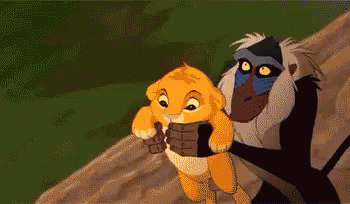
These snakestones were found all over the beaches of Yorkshire, coiled tightly and missing their heads. Folks would collect them and add heads to them to sell in street markets.
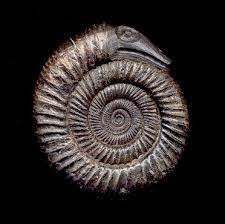
We now call these snakestones Hildoceras in honor of St. Hilda. Nice case of mistaken identity, huh?

If you want to read more stories involving ammonites, check out this cool link:
10 notes
·
View notes
Text
HF - Writing System
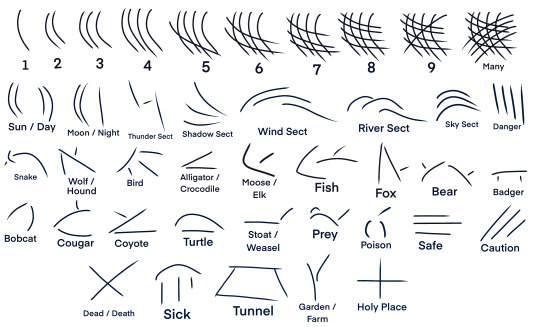
The Sects have a rudimentary writing system made up of symbols. It's used primarily to warn each other of dangers and to mark their territory. The River Sect has a larger system, which they use to carve stories into their clay pots.
Symbols can be combined to create more meaning. For example, "Moon" and "Bird" placed next to each other means "Owl". "Death" and "Holy Place" next to each other signifies a burial ground. Symbols for predators are often found next to "Danger" or "Caution", to really drive the point home.
Numbers 1 through 9
Nine, five, and four are deeply important numbers in Sect culture. There are four Sects, a cat has five claws on their front paws, and a leader gets nine lives. Since nine is the highest of these numbers, that's the highest the Sects' numerical system goes.
When a number goes past nine, you will find another number added to it (Ex; "Nine" and "Four", meaning thirteen).

.
"Many"
Used when the number of something is too high to count.
.
"Sun / Day" and "Moon / Night"
Not found often on its own, these symbols are typically paired with another one to alter its meaning (Ex; "Moon" and "Bird" mean owl, "Sun" and "Wolf" mean dog).

.
Sect Symbols
Used to mark territory. It's not uncommon to see different Sect symbols in the same place; it means that the area has traded paws throughout history.
The "River Sect" symbol is occasionally used in Thunder Sect to mark the existence of water!
The "Sky Sect" symbol, however, is only found in one place- the Deadpines- and only if you go deep enough. Modern cats are unaware of its existence- and if they've somehow happened to see it, they won't know what it means.
.
"Danger"
Not usually found on its own, this symbol is typically paired with a predator symbol, "Poison", or "Sick". In Wind Sect, you may also find it alongside "Tunnel", to mark that a tunnel is dangerous and may collapse.
.
"Snake"
Marks that a snake (or several, when paired with a number) has made a home there. Snakestones on Thunder Sect territory has this symbol carved into the trees surrounding it, alongside "Many", "Poison", and "Danger".

.
"Wolf / Hound"
When alone, it marks that a single wolf has made a home nearby. Alongside the symbol "Many", it means that a pack of wolves live nearby.
As stated under "Sun / Day" and "Moon / Night", adding the sun symbol changes wolf to dog.
.
"Bird"
On its own, this symbol most often means hawk or eagle. When paired with "Moon", the meaning changes to owl. Adding "Prey" to "Bird" means that this is a place where smaller birds (thrushes, sparrows, etc) like to hang out.
.
"Alligator / Crocodile"
This is a symbol found only on Shadow Sect territory, but it's an important one. It warns that an alligator or crocodile lives nearby.
.
"Moose / Elk"
A pissed off moose is no way to lose your life. This symbol warns that moose or elk like to stop by the area, so be alert!
.
"Fish"
Surprisingly, this symbol is uncommon even in River Sect. It's really only used when paired with "Danger", warning that there's a pike or other such fish in the area.
.
"Fox", "Bear", "Badger", "Bobcat", "Cougar", and "Coyote"
Used to mark the fact that a den or hunting ground of one of these predators is nearby.
.
"Turtle"
Most often found in River Sect and Shadow Sect, this symbol doesn't represent your nice cute box turtle. Instead, this means a snapping turtle lives nearby.
.
"Stoat / Weasel"
Often paired with "Tunnel", this is a symbol seen almost solely in Wind Sect.
.
"Prey"
Used to mark that an area is rich with prey and has good hunting.
.
"Poison"
Most often found by plants like yew and hemlock. These are typically left by healers, warning those who aren't as knowledgeable of plants that these aren't something to mess with.
May also be found near the "Snake" symbol!
.
"Safe"
Often found near the "Holy Place" symbol, this marks the fact that an area is meant to be safe. There's no fighting here.

.
"Caution"
A less severe version of "Danger". Often found alongside predator signs, "Poison", or "Sick".
.
"Dead / Death"
Never found on its own, this symbol is seen alongside signs like "Sick" and "Holy Place". "Dead" and "Sick" paired together warns that whatever sickness is nearby is deadly, while "Death" and "Holy Place" means that a burial ground is nearby.

.
"Sick"
Warns that there's sickness nearby. Often paired with "Death", "Caution", or "Danger".
.
"Tunnel"
Marks that a tunnel opening is nearby. Most often seen on Wind Sect territory.
.
"Garden / Farm"
Marks that an area is farmland or a garden, so please do not rip things up or kill the prey here!
.
"Holy Place"
Found on its own at places like the Fourtrees and Mothermouth, and paired with another symbol for places like burial grounds.
#warrior cats#warriors#wc worldbuilding & headcanons#hf lore & worldbuilding#worldbuilding#healing fire#hf au
31 notes
·
View notes
Text
What is an ammonite?
Ammonites were shelled cephalopods that died out about 66 million years ago. Fossils of them are found all around the world, sometimes in very large concentrations.
The often tightly wound shells of ammonites may be a familiar sight, but how much do you know about the animals that once lived inside?
What were ammonites?
Before we understood what they were, one of the explanations for ammonites was that they were coiled-up snakes that had been turned to stone, earning them the nickname 'snakestones'. But ammonites weren't reptiles: they were ocean-dwelling molluscs, specifically cephalopods.

An ammonite fossil with a carved snake's head
Zoë Hughes, Curator of Fossil Invertebrates at the Museum, explains, 'Ammonites are extinct shelled cephalopods. All of them had a chambered shell that they used for buoyancy.'
The group Cephalopoda is divided into three subgroups: coleoids (including squids, octopuses and cuttlefishes), nautiloids (the nautiluses) and ammonites.
Ammonites' shells make the animals look most like nautiluses, but they are actually thought to be more closely related to coleoids.
'Some of their morphology was closer to that of the coleoid group,' says Zoë. 'We think it’s more likely that ammonites would have had eight arms rather than lots of tentacles like a nautilus, though the shell is more similar to that of a nautilus.'
Ammonites were born with tiny shells and, as they grew, they built new chambers onto it. They would move their entire body into a new chamber and seal off their old and now too-small living quarters with walls known as septa.

Ammonites looked a bit like nautiluses but are thought to be more closely related to coleoids, a group that includes octopuses and cuttlefish © Esteban De Armas/Shutterstock
Zoë adds, 'The ammonite would have lived in one chamber, but we don't know how often they built a new one.
'Previously it has been suggested this could have been a monthly occurrence, but there is no evidence for that. Some studies looking at the chemical composition of the shells - a field called sclerochronology - are starting to gain some insight of how long ammonites might have lived.'
Ammonites' growing shells typically formed into a flat spiral, known as a planispiral, although a variety of shapes did evolve over time. Shells could be a loose spiral or tightly curled with whorls touching. They could be flat or helical. Some species would begin growing their shell in a tight spiral but straighten it out through later growth phases. There were also some more unusual shapes - the species Nipponites mirabilis, which is found in Japan, is exceptionally rare and looks a bit like a knot.
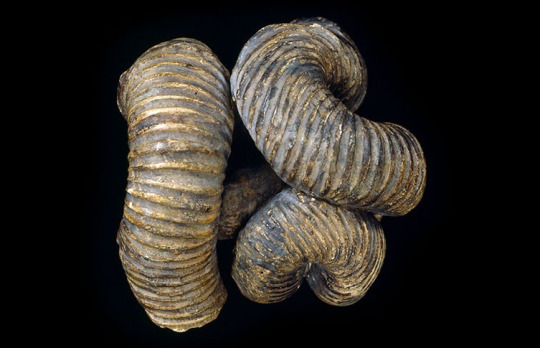
Nipponites mirabilis ammonites grew in an unusual knot shape, rather than in a typical spiral
While ammonite shells are abundant in the fossil record, it was only recently that scientists have found a very rare fossil of the soft parts of an ammonite. However, fossilised evidence of ammonite arms is yet to be found.
Until now, a lot of what we know about ammonites has been inferred based on what we see in living cephalopods.
How old are ammonites?
The subclass Ammonoidea, a group that is often referred to as ammonites, first appeared about 450 million years ago.
Ammonoidea includes a more exclusive group called Ammonitida, also known as the true ammonites. These animals are known from the Jurassic Period, from about 200 million years ago.
Most ammonites died out at the same time as the non-avian dinosaurs, at the end of the Cretaceous Period, 66 million years ago.
Zoë says, 'We didn't quite lose all of them at the end of the Cretaceous. A few species continued into the Palaeogene in the Western Interior Seaway before dying out.'

The astroid that hit Earth 66 million years ago and ended the age of dinosaurs is also thought to have been responsible for the demise of most ammonites. Image by Donald E Davis courtesy of NASA/JPL-Caltech, via Wikimedia Commons
Read more
Why did ammonites go extinct?
At the end of the Cretaceous Period, an asteroid colliding with Earth brought on a global mass extinction. A lingering impact winter halted photosynthesis on land and in the oceans, which had a major impact on food availability and was devastating for ammonites.
Nautiloids, however, which had ancient relatives that lived at the same time as ammonites, survived this mass extinction. It is thought this is in part linked to these groups' preferred water depths.
Zoë explains, 'Nautilus survived probably because it lives deeper in the ocean. Deeper environments were less affected by what was going on in shallow water environments. This is a pattern that can be seen in other groups, aside from cephalopods – fish, for example.
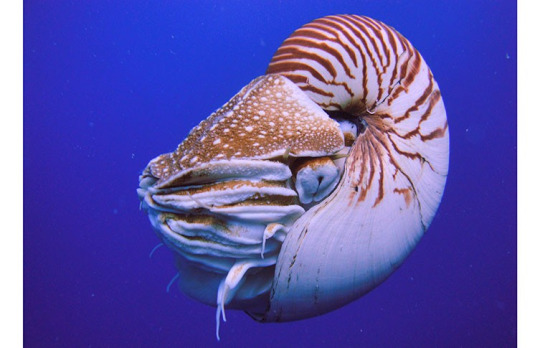
Ammonites mostly died out 66 million years ago, but other cephalopods, such as nautiluses, survived © Manuae via Wikimedia Commons (CC BY-SA 3.0)
The size of hatchlings may also have played in the nautiluses' favour as they were larger and would have been less restricted by the size of food available to them.
How many ammonite species were there?
Scientists can tell species of ammonites apart through several attributes including shell shape, size, age, location, features such as the number and spacing of ribs, defensive spines or shell-strengthening ornamentation.

We know this specimen of Kosmoceras phaeinum is a male from the long prongs, known as lappets, sticking out near the opening of the shell. They might have been used by the male to hold onto the female during mating, a bit like shark claspers.
Read more
But figuring out exactly how many species have been found so far is a bit tricky.
Like modern cephalopods, ammonites displayed sexual dimorphism, which is the noticeable difference in appearance between sexes. But when ammonite fossils that looked unique were found in the past, they tended to be recorded as new species instead of as the microconch (male) or macroconch (female) of an existing species, as this difference between the sexes was not yet known about.
However, it is estimated that over 10,000 species of ammonite - possibly even over 20,000- have been discovered.
Zoë says, 'Ammonites were quite diverse and evolved rapidly, so if you sample stratigraphically through rocks, you can actually see the evolution and the changes through them.'
How big were ammonites?
Ammonites came in a range of sizes, from just a few millimetres to times bigger, with larger sizes more common from the Late Jurassic onwards.
The largest known species of ammonite is Parapuzosia seppenradensis from the Late Cretaceous. The largest specimen found is 1.8 metres in diameter but is also incomplete. If it were complete, this ammonite's total diameter could have been from 2.5-3.5 metres.

Parapuzosia seppenradensis is the largest known species of ammonite. Image via Wikimedia Commons
Where did ammonites live?
Ammonites lived all around the world. Like their modern-day cephalopod relations, they were exclusively ocean-dwelling. They tended to live in more shallow seas and may have had a maximum depth of about 400 metres.
What did ammonites eat and what ate them?
Though it would largely have depended on their size, ammonites would likely have eaten similar things to today's cephalopods, such as crustaceans, bivalves and fish. Smaller species would probably have eaten plankton. Some other species may have been scavengers, like living nautiloids can sometimes be.
Ammonites would also have served as food for other marine animals. There is evidence of mosasaurs and ichthyosaurs having eaten them, and some fish would likely also have considered them prey.

Ichthyosaurs were among the marine animals that would have preyed on ammonites
Why are ammonites important to science?
Ammonites can be a useful tool for scientists. Because they are so common and evolved so rapidly, they are excellent to help determine the age of the rocks they were fossilised in.
Much of the Mesozoic aged rock in Europe has been sectioned into 'ammonite zones', where rocks in different areas can be associated with each other based on the ammonite fossils found in them.
Zoë says, 'I've done a few identifications where there are bits of ichthyosaur and an ammonite has also been found, and they need it identifying. If you can identify the ammonite, you can really narrow things down. They're a really good indicator for biostratigraphy.'

Another potential use for ammonite fossils could be for telling us about how animals responded to climate change in the past.
Zoë explains, 'Shelled marine animals can help us look back into the past at what was going on in terms of climate change following extinction events. If we have known periods of warming or cooling, we can then infer that into modern climate science.
'Looking at size change will tell you an awful lot. Quite often after an extinction event a lot of shelled animals shrink because they don't have the resources they need to grow. If there isn't the resource to build their shells, it's a bit of a struggle for them. You see that in a lot of organisms.'
What is an ammonite? | Natural History Museum (nhm.ac.uk)
Ammonoidea
Animal
Ammonoids are extinct spiral shelled cephalopods comprising the subclass Ammonoidea. They are more closely related to living coleoids (i.e., octopuses, squid and cuttlefish) than they are to shelled nautiloids (such as the living Nautilus). The earliest ammonoids appeared during the Devonian, with the last species vanishing during or soon after the Cretaceous–Paleogene extinction event. They are often called ammonites, which is most frequently used for members of the order Ammonitida, which represented the only living group of ammonoids from the Jurassic onwards
Scientific name: Ammonoidea
Clade: Neocephalopoda
Domain: Eukaryota
Kingdom: Animalia
Phylum: Mollusca
Ammonoidea - Wikipedia
Is an ammonite fossil worth money?
Well, the largest ammonites with special characters can fetch a very high value above $1,000. Most of them are below $100 though and the commonest ammonites are very affordable. Some examples : an ammonite Acanthohoplites Nodosohoplites fossil from Russia will be found around $150.
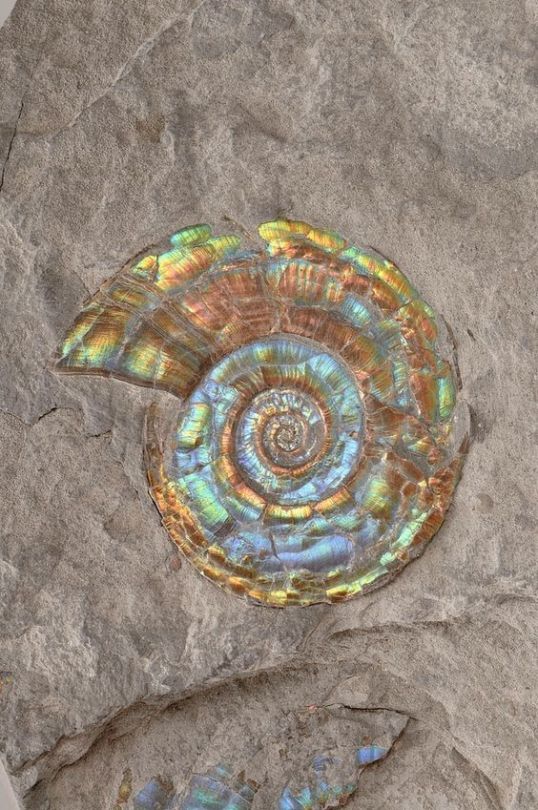
Ammonite fossil
6K notes
·
View notes
Text
#2775 - Paranorites sp.

Ammonites from around 252 - 247 Mya, straddling the border of the Permian and Triassic. I have no idea why this genus survived the worst mass extinction event in Earth's history when so many others didn't.
The earliest ammonoids appeared during the Early Devonian, and the last species vanishing 353 million years later during or soon after the Cretaceous–Paleogene extinction event. They were named by Pliny the Elder, who comparred the fossils to the ram's horns of the Egyptian god Amun. For the same reason, many ammonite genera end in -ceras, meaning "horn". The smallest known ammonites were Maximites, only 10mm in diameter. The largest was Parapuzosia seppenradensis, 200 times that.
Very little is known about the soft tissues of Ammonites - no soft tissue fossils were confirmed until 2021. All species were either predators or filter feeders.
In medieval Europe, fossilised ammonites were called "snakestones" or "serpentstones" and carved or painted to match the folkore.
University of Otago Geology Museum, Dunedin, Aotearoa New Zealand.
#Paranorites#Paranoritidae#University of Otago Geology Museum#Dunedin#Dunedin NZ#new zealand fossil#fossil#ammonite
0 notes
Text
Green Goddess: Embracing the Healing Powers of Serpentine

Serpentine, also known as "snakestone," is a striking green gemstone with a rich history and unique charm. Its name derives from its resemblance to the skin of a serpent, with intricate patterns and varying shades of green. Serpentine is prized not only for its aesthetic appeal but also for its believed healing properties, promoting balance, inner peace, and vitality. This versatile gemstone is often used in jewelry and decorative items, adding a touch of natural elegance to any ensemble or space.
0 notes